Preparing the Soil
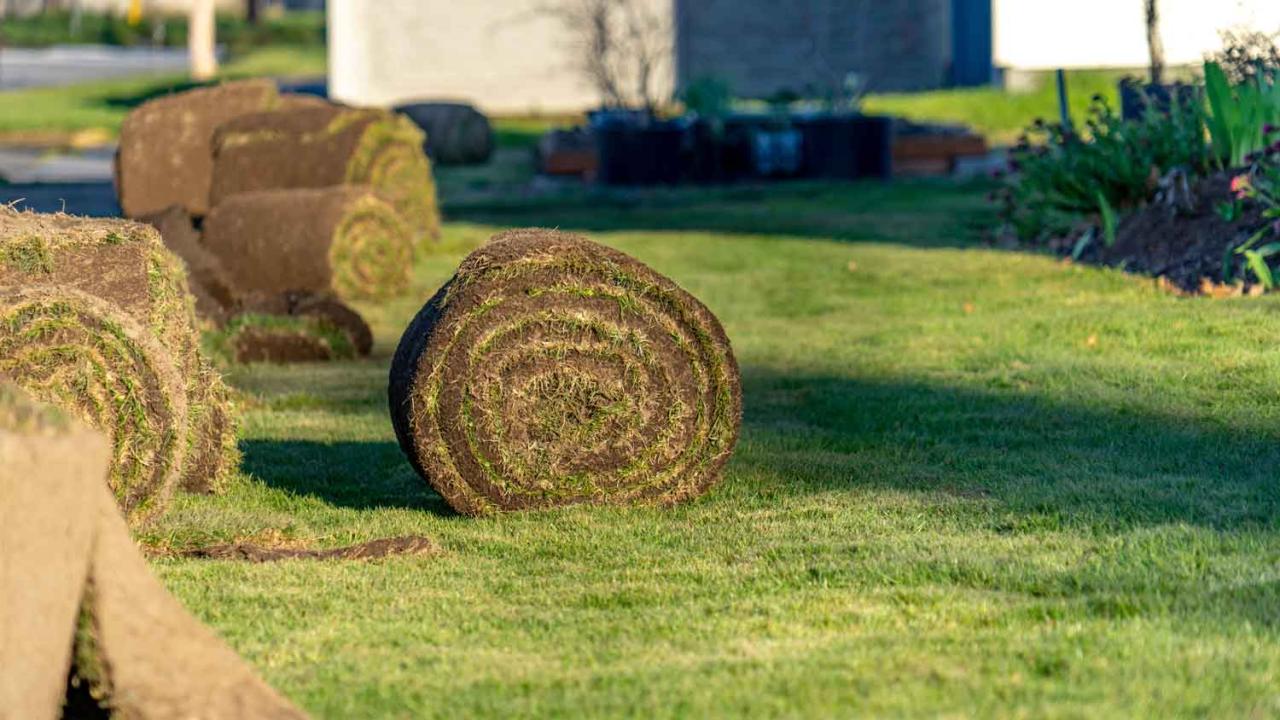
Establishing a thriving St. Augustine lawn hinges significantly on proper soil preparation. This involves more than just tilling the ground; it necessitates a thorough understanding of your soil’s characteristics and the application of suitable amendments. A well-prepared soil bed ensures optimal water retention, nutrient availability, and aeration, ultimately fostering robust root development and healthy grass growth.
Soil preparation for St. Augustine grass necessitates a comprehensive approach. This involves not only removing debris and leveling the ground but also understanding the soil’s composition, nutrient levels, and potential deficiencies. Careful consideration of these factors will lead to a healthy and vibrant lawn.
Soil Testing
Accurate soil testing is crucial for tailoring amendments to your specific needs. Soil tests provide a detailed analysis of the soil’s pH, nutrient content (nitrogen, phosphorus, potassium), and organic matter levels. This information allows you to understand your soil’s current condition and determine the most effective amendments for optimal grass growth. Understanding the results is vital for selecting the right amendments.
Interpreting Soil Test Results
Interpreting soil test results is essential for optimizing soil conditions for St. Augustine grass. A well-interpreted report reveals the soil’s pH level, nutrient content, and organic matter composition. This data allows for the targeted addition of soil amendments to address specific deficiencies. The ideal pH range for St. Augustine grass is typically between 6.0 and 7.0. Nutrient levels, such as nitrogen, phosphorus, and potassium, should also be considered. The soil test report will indicate the optimal levels for your specific soil type.
Soil Amendment Options
Various soil amendments can enhance soil quality for St. Augustine grass. Organic matter amendments, such as compost and peat moss, improve soil structure, water retention, and aeration. Compost, rich in organic matter, improves drainage and aeration. Inorganic amendments, such as lime and sulfur, help adjust the soil’s pH. Lime raises pH, while sulfur lowers it. Other options include fertilizers, which provide essential nutrients for grass growth.
- Compost: Improves soil structure, water retention, and aeration, promoting healthy root development. Compost enriches the soil with essential nutrients and beneficial microbes.
- Peat Moss: Enhances water retention and drainage, improving soil structure. It aids in creating a well-aerated soil bed, crucial for root development.
- Lime: Raises soil pH, making essential nutrients more available to the grass. Lime neutralizes acidity in the soil, improving nutrient uptake.
- Sulfur: Lowers soil pH, making essential nutrients more available to the grass. Sulfur helps adjust the soil’s acidity, impacting nutrient availability.
- Fertilizers: Provide essential nutrients, such as nitrogen, phosphorus, and potassium, for healthy grass growth. Choosing the correct fertilizer type and application rate is vital for optimal grass health.
Soil Type Suitability
The suitability of various soil types for St. Augustine grass varies. Different soil types possess varying characteristics that affect grass growth. Understanding these differences allows for appropriate soil amendments.
| Soil Type | Description | Suitability for St. Augustine | Potential Issues | Amendments |
|---|---|---|---|---|
| Sandy Soil | Loose, well-drained soil with low water retention. | Moderate, needs amendments for water retention. | Water stress, poor nutrient retention. | Compost, peat moss, organic matter. |
| Clay Soil | Heavy, dense soil with poor drainage and water retention. | Low, needs amendments for drainage and aeration. | Poor aeration, waterlogging. | Sand, compost, organic matter. |
| Loamy Soil | Balanced soil with good drainage and water retention. | High, generally well-suited. | May require minor adjustments based on pH and nutrient levels. | Lime, sulfur, fertilizer (if needed). |
Choosing the Right St. Augustine Grass
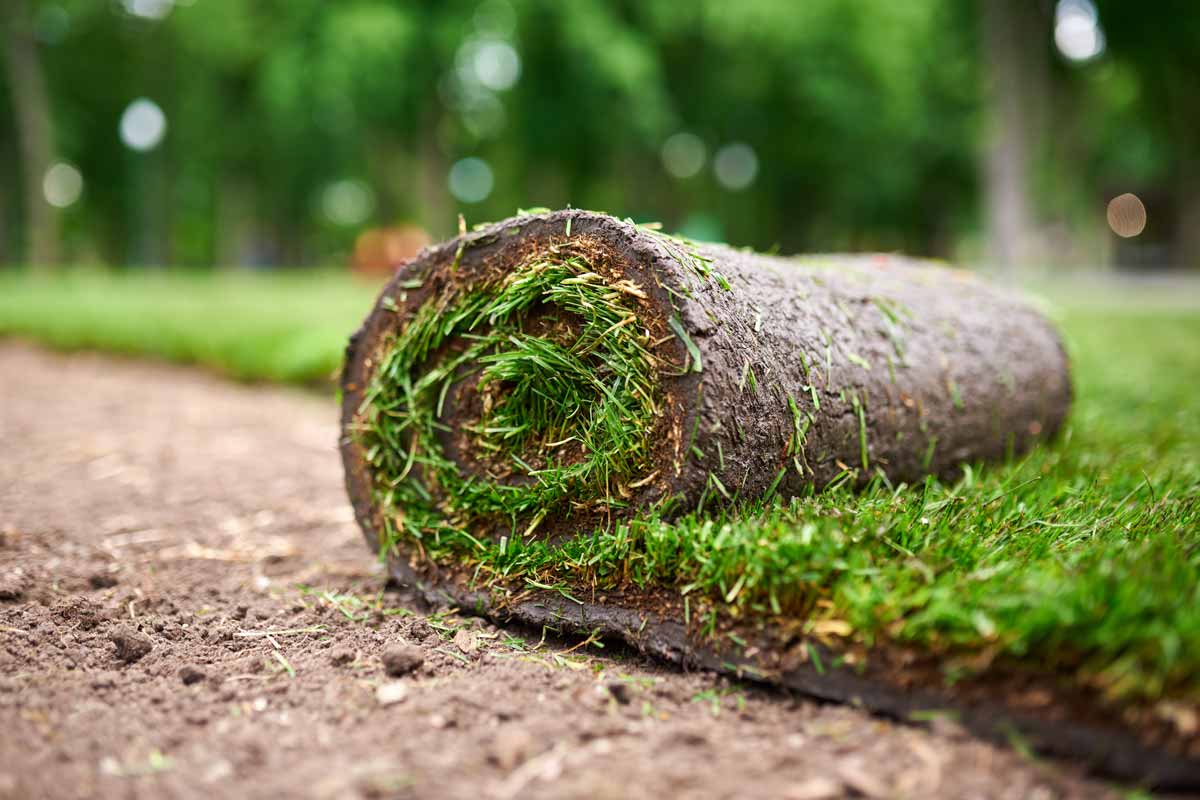
Selecting the appropriate St. Augustine grass variety is crucial for establishing a healthy and thriving lawn. Factors like climate, desired aesthetic, and maintenance requirements should be carefully considered during the selection process. Understanding the characteristics of different types will ensure a successful outcome.
Various types of St. Augustine grass exist, each possessing unique traits that influence its suitability for specific environments. These differences in characteristics and tolerances affect the overall health and appearance of the lawn, making informed selection essential.
Types of St. Augustine Grass
St. Augustine grass is categorized into several types, each with distinct qualities impacting its suitability for different regions and applications. Understanding these variations is vital for choosing the most appropriate variety. Some popular types include Palmetto, Floratam, and Seville. These variations influence growth patterns, density, and tolerance to various conditions.
Cold-Tolerant vs. Warm-Season St. Augustine Grass
A critical consideration when selecting St. Augustine grass is its response to temperature fluctuations. Warm-season varieties, like most St. Augustine types, thrive in warmer climates and exhibit reduced growth or dormancy during cooler periods. Cold-tolerant varieties, on the other hand, show a greater ability to endure lower temperatures.
The selection process should account for the local climate and expected temperature variations throughout the year. For regions experiencing occasional frost or cooler temperatures, choosing a cold-tolerant variety will likely provide a more resilient lawn. Warm-season varieties are better suited for regions with consistently warm climates.
Factors to Consider When Selecting St. Augustine Grass
Several factors need consideration when choosing the right St. Augustine grass for a new lawn. These factors range from aesthetic preferences to environmental conditions. A thorough understanding of these factors will guide the decision-making process. Factors include desired appearance, soil type, and maintenance needs.
- Desired Appearance: Different varieties exhibit varying degrees of density, leaf texture, and color. Consider the desired aesthetic when selecting the appropriate grass type.
- Soil Type: St. Augustine grass performs best in well-drained soils. Different varieties may have slight preferences regarding soil pH and composition. Researching the specific requirements of the chosen variety is essential.
- Maintenance Needs: Some varieties require more frequent mowing or fertilization than others. Evaluate the level of maintenance you’re prepared to commit to before making a selection.
Comparative Analysis of St. Augustine Grass Varieties
A comparative analysis of different St. Augustine grass varieties can help in making an informed decision. Understanding the pros and cons of each type is essential for selecting the optimal variety. The following table presents a concise overview of various St. Augustine grass types.
| Variety | Pros | Cons |
|---|---|---|
| Palmetto | Excellent drought tolerance, relatively low maintenance | Can be less dense compared to other varieties, potentially slower growth rate |
| Floratam | High density, attractive color, relatively disease-resistant | May require more frequent fertilization, more sensitive to extreme heat |
| Seville | Moderate drought tolerance, good shade tolerance | Can be susceptible to certain diseases, potentially slower growth in full sun |
Planting the Sod
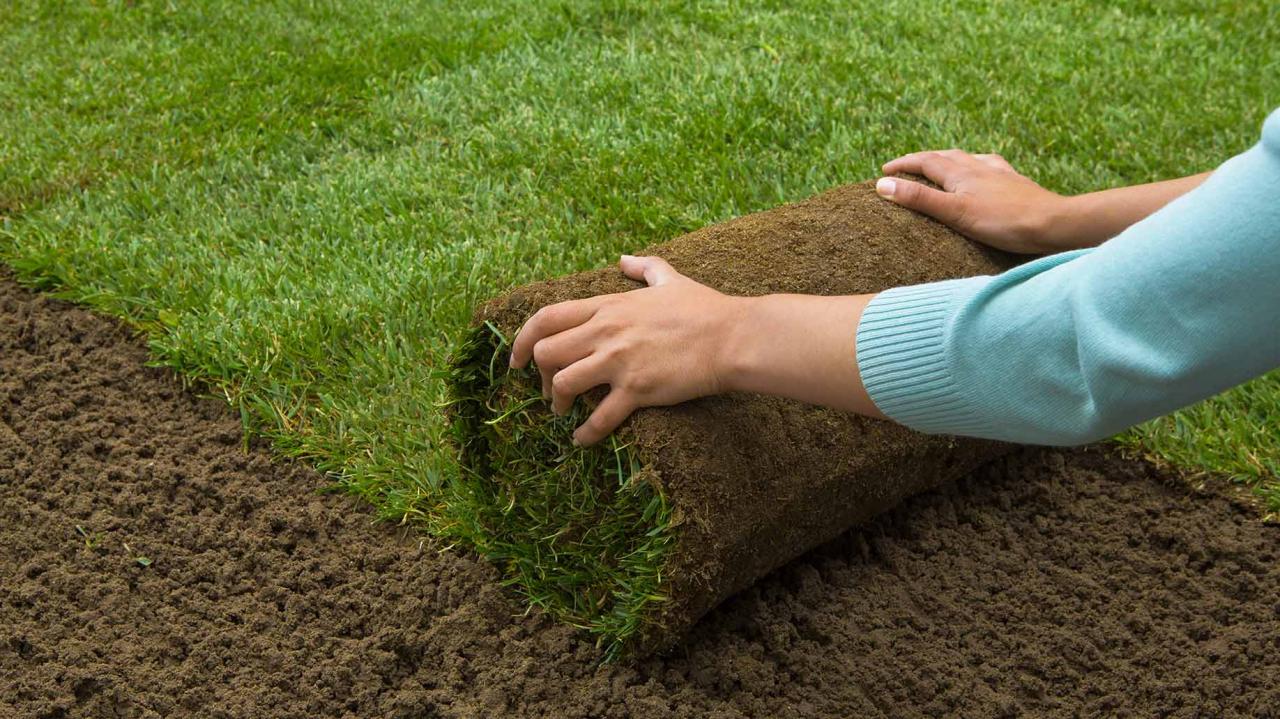
Successfully establishing a new St. Augustine lawn hinges critically on the proper installation of the sod. This involves careful planning, precise execution, and attention to detail. The right techniques will ensure a healthy, vibrant lawn that thrives for years to come.
Proper sod installation minimizes stress on the grass and encourages rapid establishment, leading to a more robust and resilient lawn. It’s important to maintain consistent moisture and temperature for the new sod, which requires understanding the best practices for laying the sod.
Laying the Sod
Laying sod effectively is crucial for the success of your St. Augustine lawn. It involves carefully positioning sod pieces to create a seamless, even surface, minimizing gaps and overlaps. This ensures proper drainage and even moisture distribution across the entire area.
The goal is to achieve a tightly connected sod layer, eliminating potential gaps or voids where weeds or other unwanted growth could emerge. This approach will help maintain the integrity of the new lawn. A well-laid sod minimizes the risk of future problems and encourages the establishment of a healthy root system.
Tools and Equipment
A range of tools and equipment will simplify and optimize the sod-laying process. Essential tools include a sharp sod cutter, a sturdy rake, a garden trowel, and a level. Additionally, a water hose and a watering can are needed to maintain proper moisture levels. Using a wheelbarrow for transporting sod can reduce physical strain.
A sharp sod cutter ensures clean edges, promoting better integration of the sod pieces. A level guarantees a smooth surface, which is vital for preventing water pooling or uneven growth. Having the necessary tools will facilitate a smooth and efficient installation process.
Avoiding Common Mistakes
Several common errors can negatively impact the success of sod installation. Overlapping sod pieces can lead to poor drainage and the potential for diseases. Improper watering can stress the sod and hinder its establishment. Inadequate soil preparation can result in uneven settling and compromised root development.
Incorrect installation techniques, such as not ensuring a level surface, can lead to problems like uneven growth or water accumulation. It’s essential to avoid these mistakes to achieve a healthy and thriving St. Augustine lawn.
Step-by-Step Installation Guide
This guide Artikels the key steps for installing St. Augustine sod.
- Prepare the area: Ensure the soil is properly prepared and compacted, free of rocks, debris, and excessive clumps. This is critical for a uniform, stable base for the sod. A well-prepared area promotes even water absorption and root development.
- Lay the sod: Carefully place the sod pieces, ensuring they are aligned and fitted together tightly. Avoid excessive overlaps, which can hinder proper drainage and potentially cause problems. The sod should be positioned so that the grass blades are oriented in the same direction.

- Water immediately: Thoroughly water the newly installed sod. This is vital to ensure the sod pieces are properly hydrated and start establishing roots. Watering promotes the sod’s integration with the soil and minimizes stress on the new grass.

- Maintain moisture: Consistent watering is essential for the first few weeks following installation. Avoid letting the soil dry out. Regularly check the soil moisture to maintain a consistently moist environment. This is crucial for the new grass to establish strong roots and grow.

- Fertilize: After a few weeks, apply a fertilizer appropriate for St. Augustine grass to encourage growth. Use a balanced fertilizer with the appropriate nutrients to promote healthy grass development. This will help the grass to thrive and develop its full potential.

Post-Planting Care
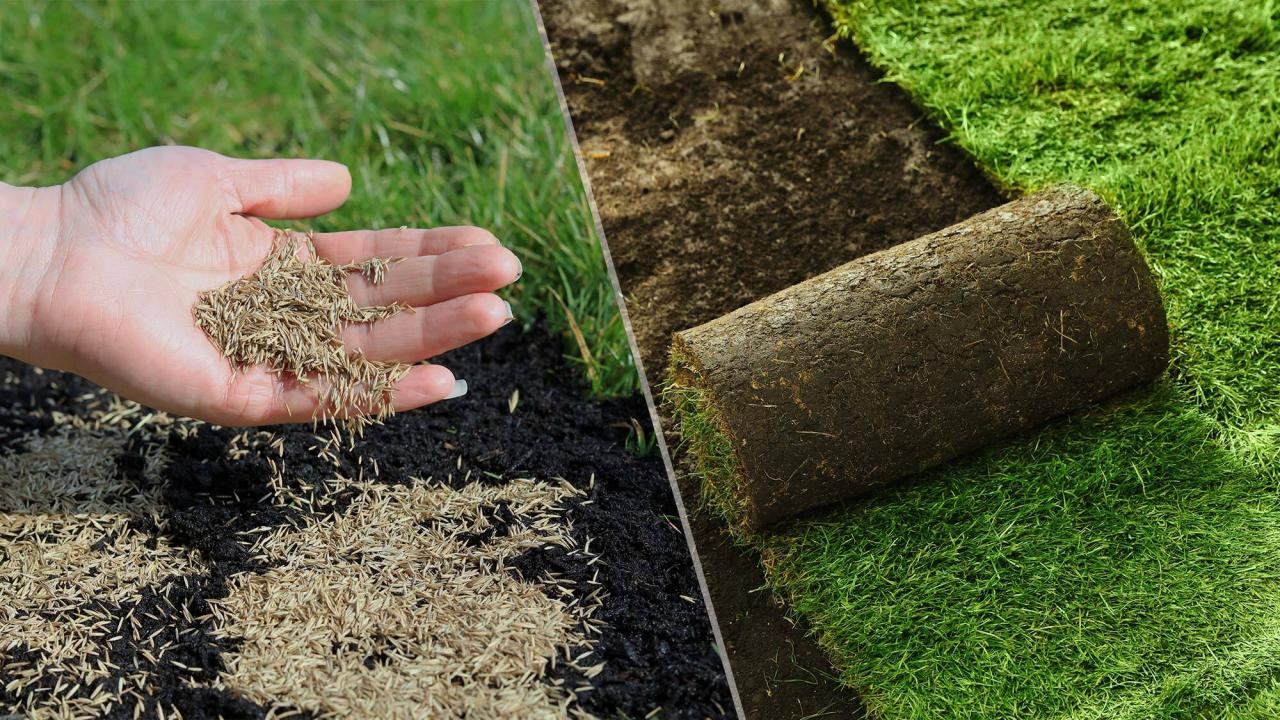
Successfully installing St. Augustine sod is only half the battle. Post-installation care is crucial for establishing a healthy and vibrant lawn. This stage involves diligent attention to watering, fertilization, pest management, and ongoing maintenance. Proper care ensures your new sod thrives and quickly becomes the beautiful lawn you envisioned.
Watering Techniques for Newly Installed Sod
Proper watering is paramount in the initial weeks after installation. Newly laid sod is susceptible to drying out, hindering root establishment. A consistent, deep watering schedule is essential. Avoid shallow, frequent waterings that encourage shallow root systems. Instead, aim for deep watering that encourages roots to grow down. Soaker hoses or drip irrigation are ideal for ensuring water reaches the root zone efficiently. Check the soil moisture regularly; water only when the top inch or two of soil feels dry. Avoid overwatering, as this can lead to waterlogging and disease problems.
Importance of Fertilization
Fertilization is vital for providing the nutrients necessary for strong growth and robust health. St. Augustine grass has specific nutrient requirements. Applying a balanced fertilizer with a slow-release formula helps ensure continuous nutrient supply without stressing the young roots. Too much fertilizer too soon can be harmful, so adhere to the manufacturer’s recommendations. For a new lawn, a starter fertilizer is often a wise choice. This will help provide the initial nutrients for robust growth. Avoid applying fertilizer when the lawn is stressed by heat or drought.
Pest and Disease Prevention
Identifying and preventing potential pest and disease issues is crucial for long-term lawn health. Regular inspections can help catch problems early. Inspect your new sod frequently for signs of grubs, chinch bugs, or other pests. Early detection allows for prompt intervention and minimizes damage. Similarly, look for signs of fungal diseases like brown patch or leaf spot. Proper watering practices, avoiding overwatering, and choosing disease-resistant varieties of St. Augustine grass are preventative measures. Maintaining good air circulation around the grass blades can also help to prevent disease.
Weekly Maintenance Schedule
Consistent weekly maintenance is essential for the long-term health and beauty of your St. Augustine lawn.
| Day | Task |
|---|---|
| Sunday | Inspect for pests and diseases. Assess moisture levels. Water deeply if needed. |
| Monday | Monitor the lawn for signs of stress. Assess the overall health of the grass. |
| Tuesday | Apply fertilizer, following manufacturer’s instructions. |
| Wednesday | Continue monitoring for pests and diseases. Check for signs of stress. |
| Thursday | Deep water if needed. Assess soil moisture. |
| Friday | Inspect for pests and diseases. Assess the overall health of the grass. |
| Saturday | Repair any damage to the lawn, such as bare spots or damaged areas. |
Troubleshooting and Maintenance: How To Sod St Augustine Grass New Lawn
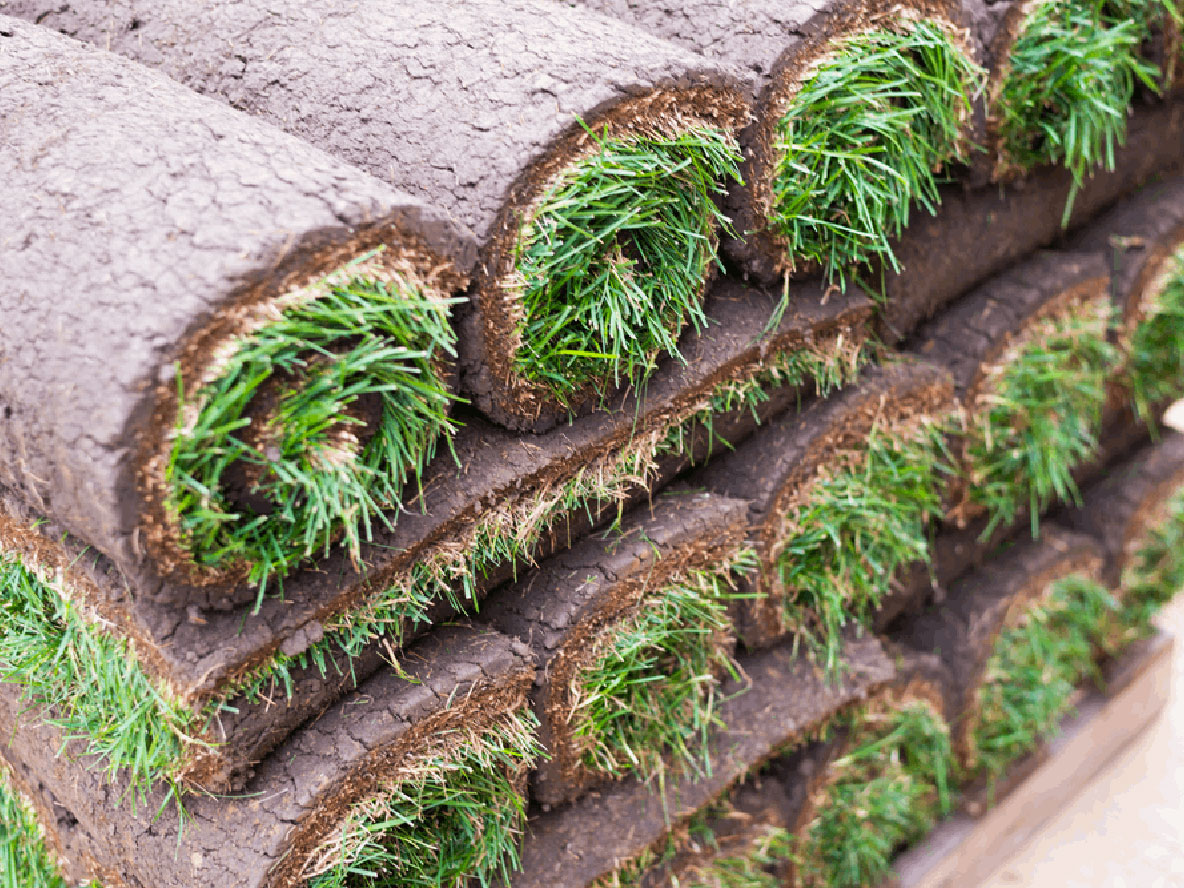
Maintaining a healthy St. Augustine lawn after installation requires proactive vigilance and understanding of potential issues. Consistent monitoring and prompt responses to emerging problems are key to a thriving lawn. Early intervention minimizes damage and fosters robust growth.
Common Problems and Diagnoses
St. Augustine grass, while resilient, is susceptible to various issues. Recognizing these problems early on allows for effective and timely solutions. Improper watering, inadequate fertilization, or pest infestations are just a few examples of potential pitfalls. Correct diagnosis is crucial for targeted solutions.
- Pest Infestations: Common pests like grubs, chinch bugs, and sod webworms can damage the turf. Visual inspection of the grass blades for signs of chewing, wilting, or discoloration is essential. A professional identification can pinpoint the exact pest, leading to the most effective treatment strategy. For instance, grub infestations might manifest as patches of thinning or dead grass, while chinch bugs often leave a stippled, tan appearance on the turf.
- Nutrient Deficiencies: St. Augustine grass needs specific nutrients for optimal growth. Yellowing, browning, or stunted growth can signal a lack of essential nutrients. Soil testing can determine the specific nutrient deficiencies, allowing for tailored fertilization programs. A balanced fertilization schedule, considering the needs of the grass, will aid in preventing future issues.
- Watering Issues: Insufficient or excessive watering can cause serious problems. Inspect the soil moisture levels regularly. Overwatering can lead to root rot and disease, while underwatering can cause the grass to become stressed and brown. A proper watering schedule, adapted to local conditions and soil type, is crucial for healthy turf. For example, deep watering less frequently is often better than frequent shallow watering for St. Augustine.
- Disease Problems: Certain diseases, like leaf spot or brown patch, can impact St. Augustine lawns. Look for symptoms like spots, discoloration, or wilting. Proper diagnosis is important to select the appropriate fungicide and avoid spreading the infection. Understanding the specific disease will guide the appropriate treatment to prevent further damage.
Preventing Issues
Proactive measures are vital to maintain a healthy St. Augustine lawn. A comprehensive approach encompassing proper soil preparation, consistent watering, and timely fertilization will minimize potential problems. Careful attention to detail will reduce the likelihood of future issues.
- Appropriate Soil Preparation: Preparing the soil with adequate drainage and aeration is essential. This ensures the proper distribution of water and nutrients, contributing to overall health. Compacted soil can lead to problems like poor drainage and stunted growth. Addressing these issues during initial soil preparation will ensure the lawn thrives in the long term.
- Consistent Watering: Establish a regular watering schedule based on your local climate and soil type. Deep, infrequent watering encourages deep root growth, making the lawn more resilient to drought. This strategy strengthens the grass’s ability to withstand stress.
- Regular Fertilization: A well-balanced fertilization schedule tailored to your soil’s needs will provide the essential nutrients for robust growth. Regular fertilization helps to maintain the proper nutritional balance, strengthening the grass’s resistance to stress.
- Pest Monitoring: Regularly inspect your lawn for signs of pest activity. Early detection allows for swift action, preventing widespread damage. Regular inspections will identify potential problems before they become significant issues.
Frequently Asked Questions
This section provides answers to common inquiries about St. Augustine grass maintenance. These answers aim to clarify important aspects of care and upkeep.
- How often should I mow my St. Augustine lawn? Mowing frequency depends on the desired height and growth rate. Generally, mowing every 7 to 10 days is sufficient, but adjust based on your lawn’s specific needs.
- What is the ideal time of year to fertilize my St. Augustine lawn? The best time to fertilize is typically in the spring or fall when the grass is actively growing. This timing promotes optimal nutrient uptake and contributes to healthy growth.
- How do I prevent weeds in my St. Augustine lawn? Pre-emergent herbicides can prevent weed growth, while post-emergent herbicides target existing weeds. Using the appropriate products for your specific situation will help to maintain a weed-free lawn.
Watering Strategies
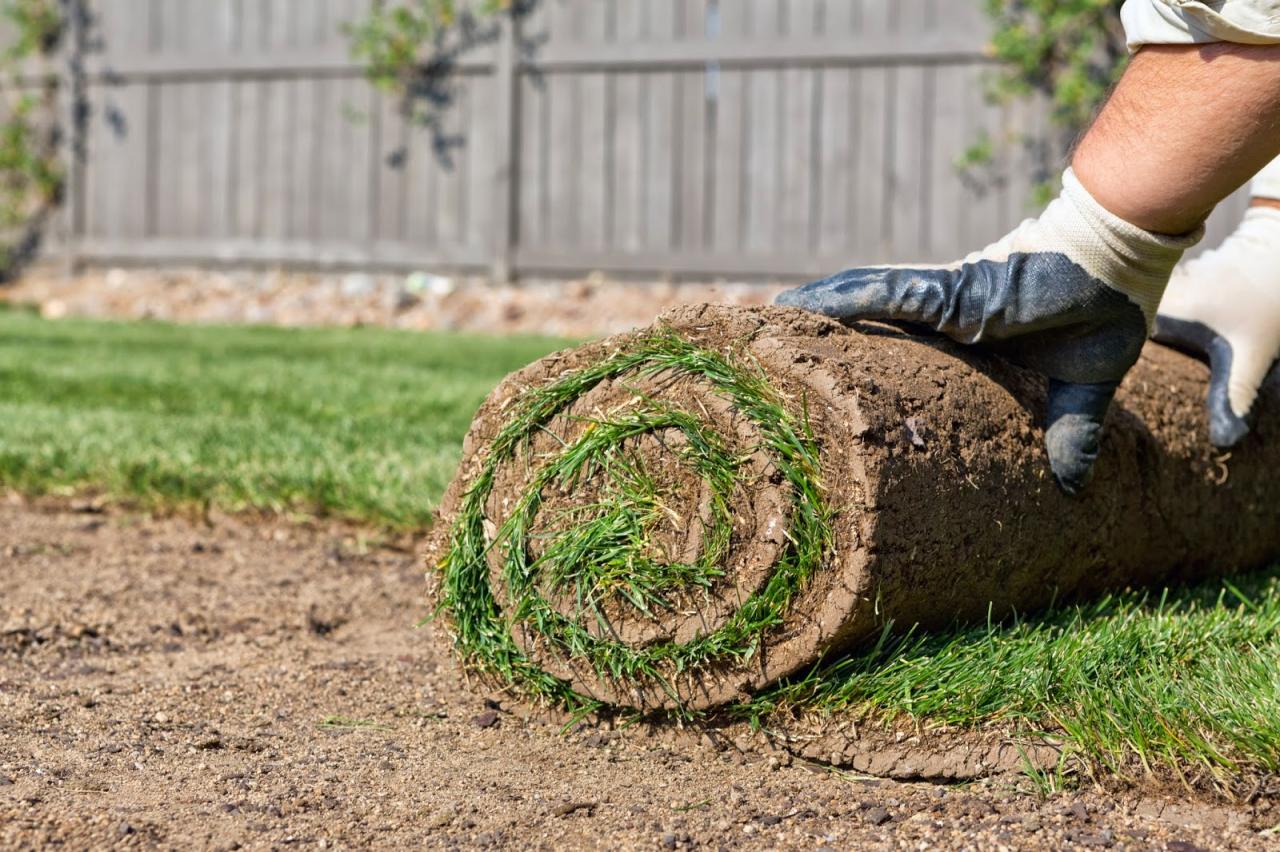
Proper watering is crucial for establishing a healthy St. Augustine lawn. Consistent moisture is essential for root development and overall plant health. Different watering methods and schedules can significantly impact the success of your new lawn.
Effective watering techniques are vital for ensuring your St. Augustine grass thrives. Choosing the right approach and maintaining a consistent schedule are key to achieving a lush, vibrant lawn.
Watering Methods
Various methods are available for watering St. Augustine lawns, each with its own advantages and disadvantages. Understanding these differences allows you to select the most suitable approach for your specific needs and circumstances.
- Sprinklers provide a broad, overhead watering approach. Their effectiveness depends on factors like nozzle type, water pressure, and wind conditions. Properly adjusted sprinklers can distribute water evenly across the lawn, but uneven distribution is possible if not correctly positioned or maintained.
- Soaker hoses deliver water directly to the soil, promoting deep root penetration. These hoses are ideal for new lawns as they minimize evaporation and promote consistent moisture at the root zone. Their effectiveness depends on the hose’s length, pressure, and the type of soil.
- Drip irrigation systems offer targeted watering to specific plants or areas. They are highly efficient in conserving water by delivering it directly to the roots. Their effectiveness depends on the system’s design, the type of emitter, and the specific watering needs of the St. Augustine grass.
Optimal Watering Schedule for New Lawns
A new St. Augustine lawn requires a different watering schedule than an established one. Regular watering during the initial stages promotes root development and helps the grass establish itself. A consistent schedule is vital for healthy growth.
New St. Augustine lawns require more frequent watering than established lawns. Aim for deep, infrequent watering rather than shallow, frequent watering. This encourages deeper root growth, which is crucial for long-term health and resilience. The ideal frequency will depend on local climate and soil conditions.
Signs of Overwatering and Underwatering, How to sod st augustine grass new lawn
Recognizing the signs of overwatering and underwatering is essential for maintaining a healthy St. Augustine lawn. These indicators provide insights into the watering needs of your lawn.
- Signs of Overwatering include: yellowing or browning of the grass, especially at the base; soggy or waterlogged soil; a lack of vigor or growth; and an unpleasant odor. These signs suggest the soil is not properly draining, potentially causing root rot. Addressing the drainage issues is key.
- Signs of Underwatering include: wilting of the grass; the grass turning a light brown color, often with a dry appearance; and soil that is dry to the touch. These signs indicate a lack of moisture, potentially causing stress and impacting growth. Addressing the moisture levels is vital for maintaining healthy grass.
Watering Techniques Comparison
This table Artikels different watering techniques and their effectiveness, taking into account factors like water conservation and even distribution.
| Watering Technique | Effectiveness | Water Conservation | Even Distribution |
|---|---|---|---|
| Sprinklers | Moderate | Moderate | Moderate (dependent on adjustment) |
| Soaker Hoses | High | High | Good (if properly positioned) |
| Drip Irrigation | Very High | Very High | Very High (targeted) |
Fertilizing Strategies
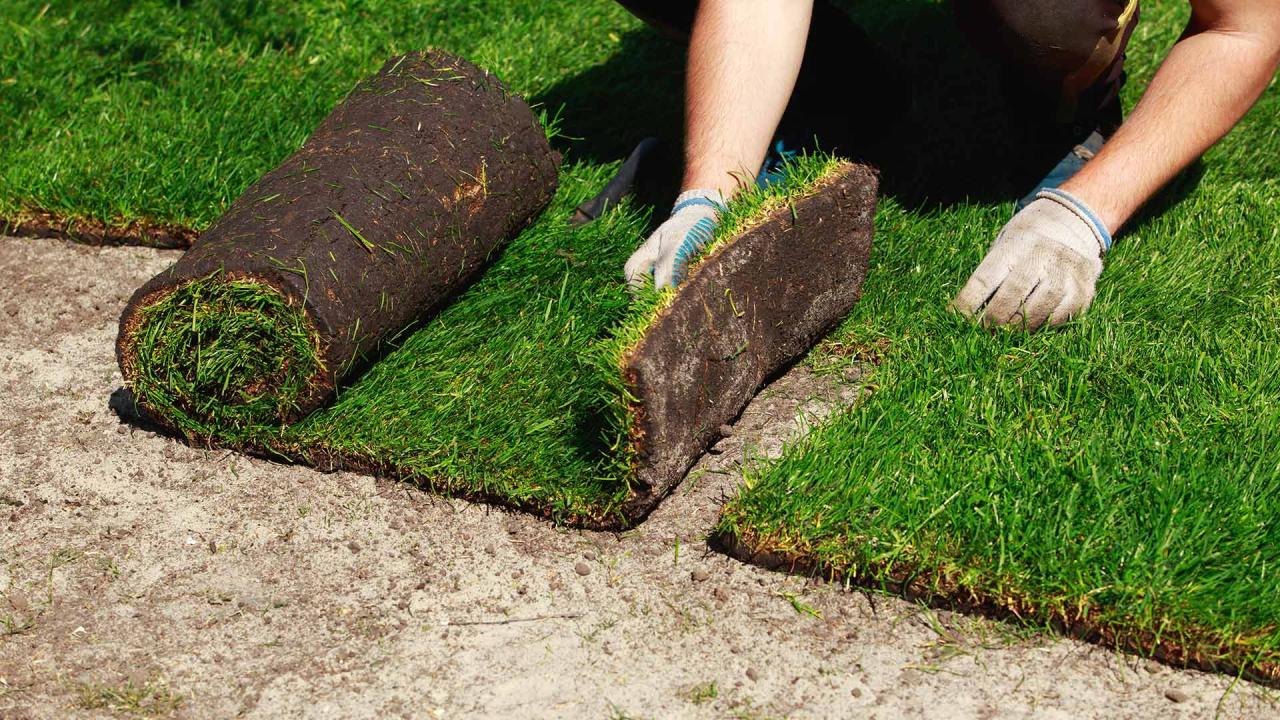
Proper fertilization is crucial for the health and vibrant growth of your St. Augustine grass lawn. A well-nourished lawn is more resilient to stress, diseases, and weeds, leading to a more aesthetically pleasing and robust landscape. This section details the importance of fertilizing, different fertilizer types, ideal application times, and a comparison of popular brands.
Importance of Fertilizing St. Augustine Grass
St. Augustine grass, like all plants, requires essential nutrients for healthy growth and development. Fertilizers provide these vital nutrients, particularly nitrogen, phosphorus, and potassium, that promote strong root systems, lush foliage, and disease resistance. Regular fertilization helps maintain the vibrant green color and dense texture characteristic of a healthy St. Augustine lawn. Without proper fertilization, the grass may exhibit signs of nutrient deficiency, such as yellowing, thinning, and reduced growth rates.
Different Fertilizer Types and Application Methods
Various fertilizer types are available, each with specific formulations and application methods. Granular fertilizers are convenient for broad application, while liquid fertilizers offer more targeted feeding and are often preferred for smaller areas or for situations where a precise application is needed. Granular fertilizers are typically applied using a spreader, ensuring even distribution across the lawn. Liquid fertilizers are applied using a hose-end sprayer or a specialized fertilizer applicator. Follow the manufacturer’s instructions for specific application rates and safety precautions.
Best Time of Year to Fertilize St. Augustine Grass
The optimal time for fertilizing St. Augustine grass is during the active growing season. Spring and fall are typically the best times, as these seasons allow for adequate nutrient uptake and minimal risk of nutrient runoff. Early spring applications encourage rapid growth, while fall applications help strengthen the grass for the winter months. Avoid fertilizing during periods of extreme heat or drought, as this can stress the grass and hinder nutrient absorption.
Comparison of Fertilizer Brands
The table below compares the ingredients and formulations of popular fertilizer brands, offering insight into their composition. Note that specific formulations may vary by product line and package size. Always check the product label for the most accurate and up-to-date information.
| Brand | Primary Ingredients (Approximate) | Typical Application Rate |
|---|---|---|
| Brand A | Nitrogen (N), Phosphorus (P2O5), Potassium (K2O) | 1 lb/1000 sq ft |
| Brand B | Nitrogen (N), Phosphorus (P2O5), Potassium (K2O), Micronutrients | 1.5 lb/1000 sq ft |
| Brand C | Slow-release Nitrogen, Phosphorus, Potassium, Iron | 0.75 lb/1000 sq ft |
| Brand D | Nitrogen (N), Phosphorus (P2O5), Potassium (K2O), Organic Matter | 1.2 lb/1000 sq ft |
Pest and Disease Management
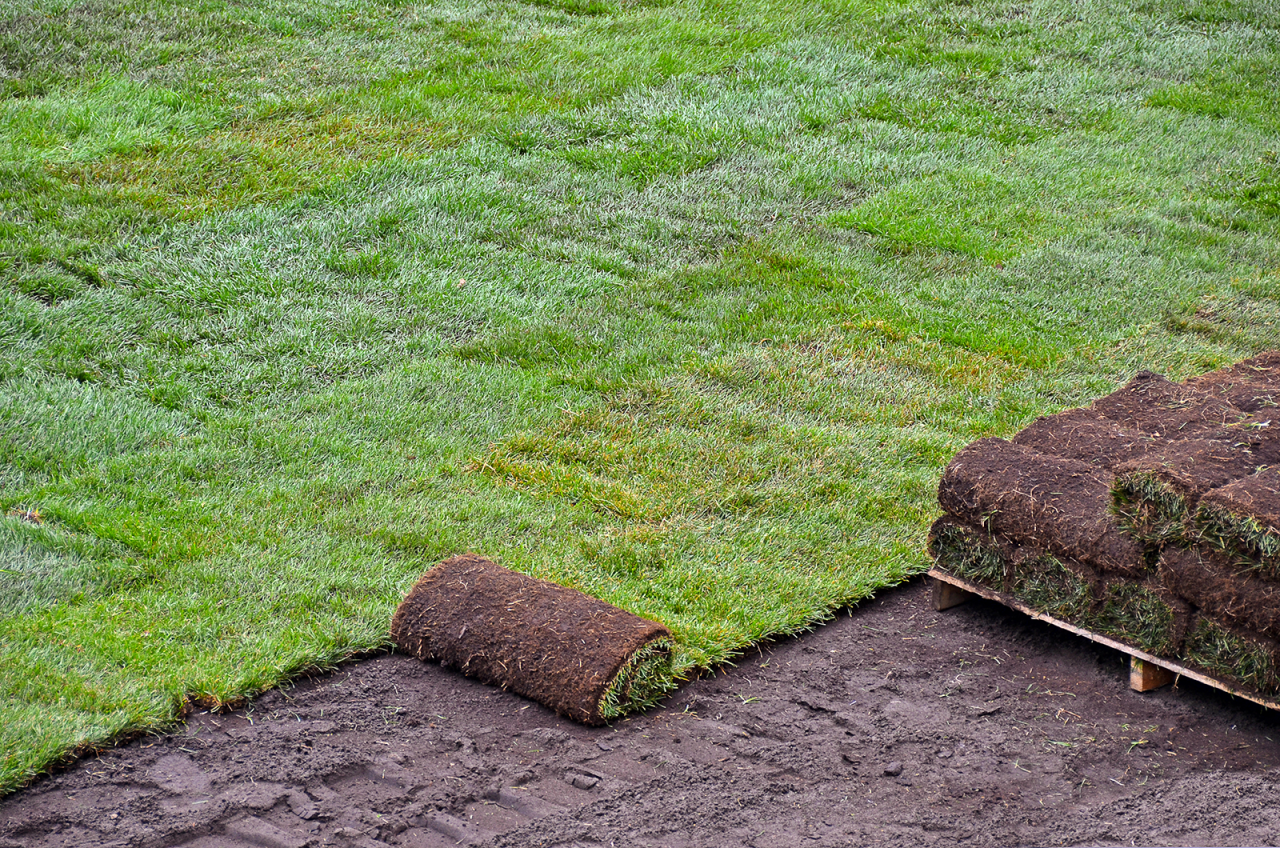
Maintaining a healthy St. Augustine lawn requires proactive pest and disease management. Ignoring these issues can lead to significant damage and aesthetic problems, impacting the overall beauty and value of your property. Understanding common threats and implementing preventative measures are crucial for long-term lawn health.
Proper identification of potential problems is paramount. Knowing the specific pests or diseases affecting your lawn allows for targeted and effective treatment strategies. This section details common issues, preventative measures, and various control methods.
Common Pests Affecting St. Augustine Grass
St. Augustine grass is susceptible to several pests, including chinch bugs, sod webworms, grubs, and armyworms. These insects can cause significant damage to the turf, leading to brown patches, thinning, and overall decline. Early detection and prompt action are essential to mitigate the impact of infestations.
Common Diseases Affecting St. Augustine Grass
Several fungal diseases can affect St. Augustine grass, including leaf spot, brown patch, and pythium blight. These diseases often manifest as discoloration, dead patches, or overall decline in the turf’s health. Conditions like excessive moisture and poor air circulation can exacerbate these issues.
Organic Pest Control Methods
Organic pest control methods are environmentally friendly and can effectively manage many common lawn issues. Beneficial insects, such as ladybugs and lacewings, can help control pest populations naturally. Compost tea, neem oil, and insecticidal soap are also effective organic options. Organic methods often require consistent application and monitoring, but they present a lower risk of harming beneficial insects and the environment.
Chemical Pest Control Methods
Chemical pest control methods can provide rapid and significant results for severe infestations. However, they require careful consideration and application to minimize potential harm to the environment and human health. Always follow the manufacturer’s instructions carefully when using any chemical pesticide. In some cases, a professional landscaper might be necessary for optimal application.
Preventative Measures for Pest and Disease Issues
Implementing preventative measures is often more effective than reactive treatment. Maintaining optimal soil conditions, proper watering practices, and ensuring adequate air circulation can minimize the risk of pest and disease infestations. Regular lawn maintenance, including mowing and fertilization, is also crucial for promoting healthy turf growth and resilience.
- Proper Soil Drainage: Ensure adequate drainage to prevent excessive moisture, a key factor in disease prevention.
- Mowing Height: Maintaining the recommended mowing height for your St. Augustine grass variety encourages healthy growth and reduces stress on the turf, making it less susceptible to pests and diseases.
- Proper Watering: Avoid overwatering, which can lead to fungal diseases and create ideal conditions for pests.
- Fertilization: Balanced fertilization promotes strong, healthy grass that can better resist pests and diseases.
- Weed Control: Controlling weeds, which can harbor pests and diseases, is essential for overall lawn health.
- Regular Inspection: Thoroughly inspecting your lawn regularly for signs of pest or disease activity is key to early intervention.
Mowing and Maintaining
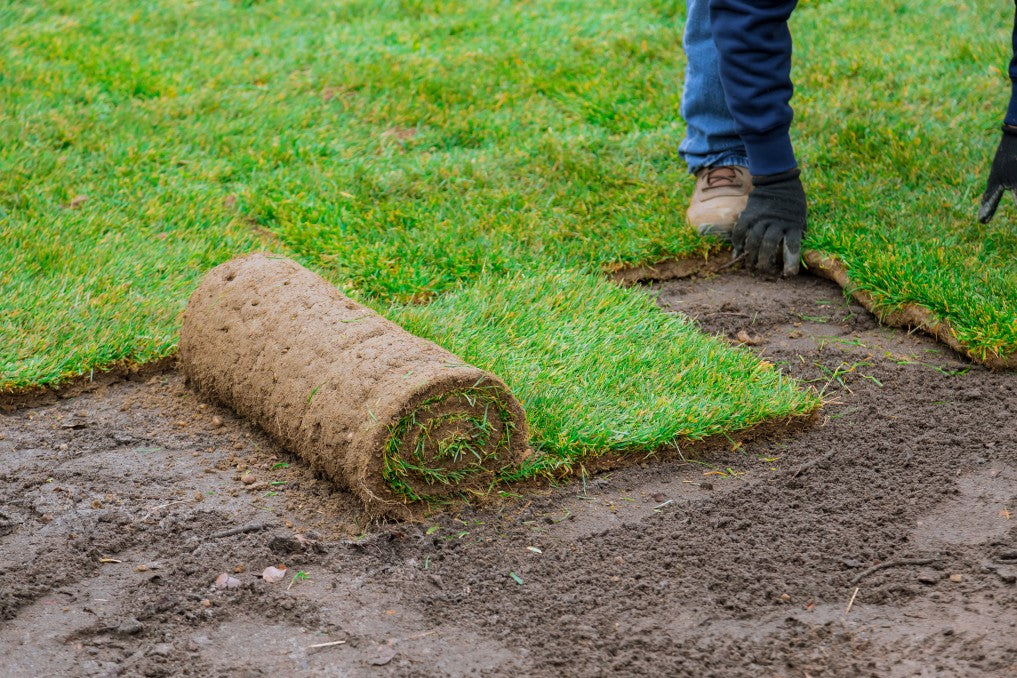
Maintaining a healthy St. Augustine lawn involves more than just planting and watering. Regular mowing and proper maintenance practices are crucial for promoting vigorous growth and a beautiful aesthetic. Consistent care ensures a dense, lush turf that resists weeds and pests.
Optimal Mowing Height
St. Augustine grass thrives at a specific mowing height. Maintaining the ideal cutting height is essential for promoting a healthy and aesthetically pleasing lawn. Too short a cut can stress the grass, making it more susceptible to environmental damage and disease. Conversely, excessive height can encourage weed growth and hinder overall appearance. The optimal mowing height for St. Augustine grass typically ranges from 1 to 2 inches.
Proper Mowing Techniques
Proper mowing technique is just as important as mowing height. A sharp mower blade is paramount for clean cuts and minimizing stress on the grass. Avoid cutting grass when it’s wet, as this can lead to uneven cuts and increased risk of damage. It’s also crucial to mow in overlapping patterns to ensure even coverage across the entire lawn. Begin mowing in one direction and follow the pattern in the opposite direction.
Importance of Regular Lawn Maintenance
Regular lawn maintenance is critical for maintaining the health and beauty of St. Augustine grass. This encompasses a range of practices, including mowing, watering, fertilizing, and pest control. Regular maintenance promotes a robust lawn that is less prone to weeds, diseases, and pest infestations. Consistent care will ensure your St. Augustine grass remains lush and vibrant throughout the seasons.
Mowing Tips and Best Practices
| Aspect | Tip/Best Practice |
|---|---|
| Mowing Frequency | Mow your St. Augustine grass regularly, ideally every 7-10 days, depending on growth rate. Adjust frequency based on the specific growth rate of your lawn. |
| Mower Blade | Ensure your mower blade is sharp. A dull blade can tear the grass, leading to damage and uneven growth. Sharp blades make clean cuts. |
| Mowing Direction | Alternate mowing directions each time to prevent striping and ensure even coverage. For example, if you mow in one direction in the first pass, mow in the opposite direction in the next pass. |
| Wet Conditions | Avoid mowing when the grass is wet. Wet grass is more susceptible to damage, leading to uneven cuts and stress on the turf. |
| Overlapping Mowing | Overlap mower passes to ensure that every part of the lawn receives a cut. This prevents missed areas. |
| Grass Collection | Remove grass clippings from the lawn. Left behind, grass clippings can smother the grass. Consider mulching or bagging. |
Common Queries
How to sod st augustine grass new lawn – What are the best tools for installing St. Augustine sod?
For sod installation, a sharp sod cutter, a rake, and a tamper are essential. Using the right tools will significantly improve the process and reduce potential damage to the sod.
How often should I water a newly sodded St. Augustine lawn?
Newly sodded St. Augustine grass needs frequent watering, typically 1-2 inches per week, especially during the first few weeks after installation. Monitor the soil moisture to avoid overwatering.
What are the signs of overwatering in St. Augustine grass?
Signs of overwatering include yellowing of the grass blades, a spongy texture to the soil, and a lack of new growth. Adjust your watering schedule if you notice these signs.
What are common pests that affect St. Augustine grass?
Chinch bugs, grubs, and sod webworms are common pests that can affect St. Augustine lawns. Regular inspection and proactive pest control measures are vital for preventing infestations.